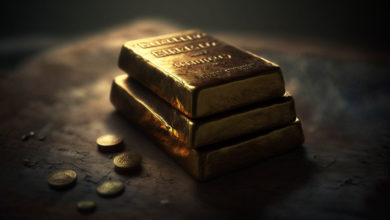US Interest Rates Rise by 0.25% Despite Banking Crisis

In the hours leading up to the rate decision, the CME FedWatch Tool revealed that 86.4% of respondents were convinced there would be a rise of 0.25%.
The Federal Reserve has increased interest rates in the US by 0.25% for the second successive meeting, amid turmoil in the banking system which might have led to a pause in rate hikes.
This move brings the benchmark rate up to 4.75% to 5%, which is the highest it has been since 2007.
The US central bank revealed that recent indicators such as modest growth in spending and production, alongside gains in the job market, encouraged their decision to raise rates again to combat high inflation.
Annualized inflation in the US has fallen to 6% in the year to February, an eighth consecutive monthly fall in annualized prices, and a drop from the 9.1% June peak. However, month-on-month inflation rose by 0.4%.
Overall, the Federal Open Market Committee (FOMC) stuck to its main recently stated objective of reducing inflation. This is despite the belief that the aggressive rate-raising policy has contributed to the stress in the banking system and the recent collapses of Silicon Valley Bank and Signature Bank.
In the hours leading up to the rate decision, the CME FedWatch Tool revealed that 86.4% of respondents were convinced there would be a rise of 0.25%.
After the announcement, the tracker was split as to what will happen at the next FOMC meeting on 2nd to 3rd May, as just over 56% believe that the rate rise phase will finally be paused. So, there seems to be a majority believe that we have seen the last rate hike within the current tightening cycle in the USA.
Goldman Sachs said that it expected the FOMC to halt rate rises rather than increase them again, due to the current banking issues.
At the much-anticipated press conference following the interest rate announcement, Federal Reserve Chair Jerome Powell admitted that the FOMC did mull not hiking at all. This was considered due to the increasing instability in the banking sector, and the pressure that another rate rise could cause.
Yet Powell also said that it’s “too early” to fully see just what the effect of the banking crises has been, despite issuing a statement which said the US banking sector is resilient.
Powell also said that there still could be a soft landing ahead for the US economy, but that recent events in the banking sector certainly do not improve the chance of a soft landing.
Recently a coordinated response from major central banks including the Federal Reserve, the Bank of England and the European Central Banks, used swap lines to deliver US Dollars to help with credit supply to businesses and households.
On 14th March ratings agency Moody’s Investment Service downgraded the US banking system to negative from stable.
The FOMC reiterated that its long-run target is to bring down inflation to its 2% target. The FOMC also signaled that there could be a continuation of the rate rise cycle, as the committee anticipated that “policy firming” will be necessary to return inflation back to 2%.
The effect of cumulative monetary policy tightening, and its consequences for economic activity and inflation, will be watched carefully by the committee.
Richard Carter, head of fixed interest research at Quilter Cheviot, said: “For now, the cracks in the banking sector appear to be small and affecting only a handful of players. Furthermore, the Credit Suisse fallout will have little impact on the US financial system and thus the Fed is likely feeling quite comfortable in continuing to raise rates, despite the impact it will have on the consumer.
However, events of the last two weeks have shown things can change very quickly and thus further rate rises could have unintended consequences. Inflation is difficult to get under control, and while interest rate rises help do the job, they can also set off another chain of events.
The Fed will be hoping this latest one doesn’t do that.”
Major US benchmark stock markets declined as Powell addressed the media.
The S&P 500 Index initially rose after the rate raise was delivered but ended the day down by 1.65%.
The tech-based Nasdaq 100 Index reacted in a similar fashion, rising to trade at a new 7-month high at12,919 before falling sharply to close at 12,567.
The US Dollar sank after the rate announcement in what can be seen as a reflection of market sentiment that further rate hikes are unlikely. The US Dollar Index ended the day lower by 0.62%. This is in line with the long-term bearish trend in the greenback, which may give Forex traders a good opportunity to be short of the USD.
Source link




